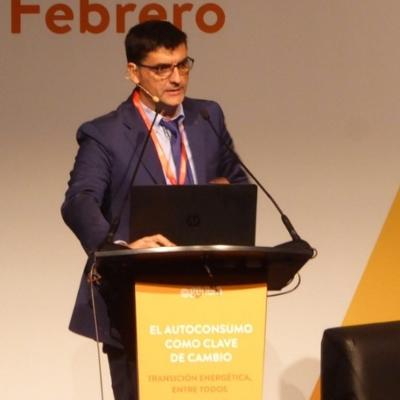

Pedro Ginés Vicente (ATECYR): “The sector is assimilating the fact that that there's no turning back on the path to decarbonation”

Pedro Ginés Vicente Quiles, Chairman of the Technical Committee of ATECYR (the Spanish Technical Association of Air-Conditioning and Refrigeration), claims that the sector is assimilating the fact that that there's no turning back on the path to decarbonation and that it is practically the standard solution for new-builds. He also tells us how the industry has evolved in 2022 and his outlook for the new year that has just begun.
How has the air conditioning and refrigeration sector evolved in 2022 and what are your expectations for 2023?
The sector is assimilating the fact that there's no turning back on the path to decarbonation and that it is practically the standard solution for new builds in most cases. 2022 saw some uncertainty regarding the F-GAS regulation and the Fluorinated Gases Tax which could lead to more extensive use of A2L and A3 refrigerants, which would change the way we think about installations of the future.
2022 was marked by high energy costs, which drives home the need for commitment to energy efficiency and the use of renewable energies. However, rising prices, volatility and scarcity of raw material generated by the geo-political factors of the day, are an obstacle to greater development of economic activity.
2022 also saw the introduction of the financing mechanisms covered by the Recovery, Transformation and Resilience Plans, which will undoubtedly help tackle the great challenge of decarbonisation of the thermal installations sector, both at the business level and at the level of installations. The positive effect of the coming on stream of these funds will be more notable in 2023.
The outlook for 2023 is a very positive one, as we find ourself in a period of growth of activity in the sector, driven in part of the financial commitment the sector is receiving in order to improve the energy efficiency of buildings.
What are the main challenges facing the sector for 2023?
There are many challenges but the most important ones are the following. Firstly there is the decarbonisation of existing installations. We must meet the target zero emissions by 2050 while also significantly reducing energy consumption. The buildings sector is one of the most conducive to electrification, with the most complicated issues in relation to achieving this being areas with severe winter climates and the supplied of ACS.
The second challenge is that of refurbishing buildings. It is necessary to commit to the refurbishment of a significant portion of the existing stock of buildings. This approach must be definitively promoted to reduce the energy consumption of the building stock. This should be done under the ‘energy efficiency first’ principle, which is defined Article 2 Paragraph 18 of the EU Regulation on the Governance of the Energy Union and Climate Action. It’s about “saving before building,” placing reduction of demand and efficiency of systems to the fore and applying renewable energies to efficient buildings.
The third challenge is to improve interior air quality The pandemic showed us that there were many buildings with poor or no ventilation that have been refurbished. The improved energy efficiency should give us a clear vision of improving interior spaces in terms of health, ensuring the necessary ventilation. The demands of the current regulations are adequate, but buildings built prior to the entry into force of RITE 2006 do not provide a minimum level of interior air quality; this is of special concern in schools and colleges, workplaces and commercial premises.
The fourth challenge is managing aid for refurbishment. The Recovery, Transformation and Resilience plan will place a great deal of focus on European funds. But the application process for the subsidies is tediously drawn out and in some cases discourages the submission of an application, which could result in funds not being used efficiently. In this regard, the sector should be prepared for the management of these funds.
The fifth challenge is the lack of qualified professionals. There is a shortage of qualified professionals at both the level of prescription and the level of operation and maintenance of thermal installations in buildings. We are seeing retirements, with the loss of that know-how without the necessary knowledge transfer. We must foster the interest of young people so they see the sector as an attractive future, professionally and personally.
What is the importance of energy efficient and digitalisation in the sector over the coming year?
The ‘energy efficiency first’ principle of the European Union and already transposed into our own legal order, is the main pillar of the process, accelerating decarbonisation. Starting with the reduction of demand, and continuing through equipment efficiency, the prescription of solutions and their dimensioning, installation and maintenance. The process will end with the implementation of renewable and residual energies. There is no other way to ensure the sustainability and circularity of the thermal installations in buildings sector.
The increased efficiency of air conditioning and refrigeration systems that can be achieved through digitalisation is one of the biggest strengths of the sector. The new challenge arises from the increased digitalisation for automated decision-making based on users’ information and weather forecasts, etc.
Automation and control, together with the accumulation of energy, allows for the adaptation of demand to the production of renewable energy, expanding the limits of efficiency way beyond what was previously thought impossible.




